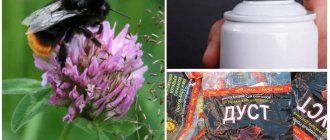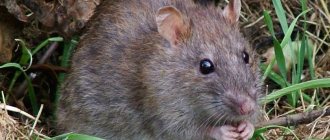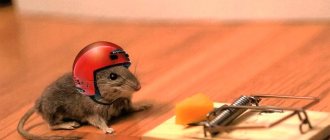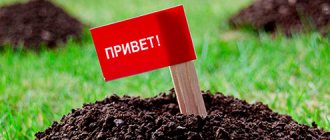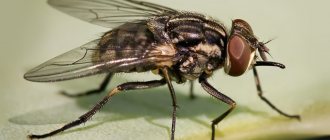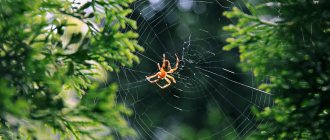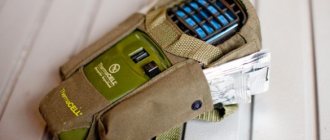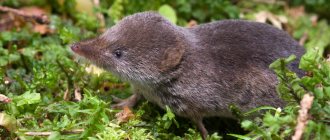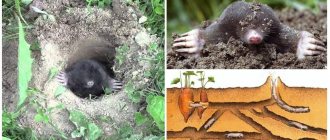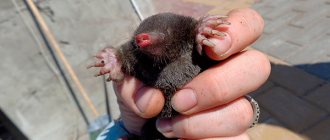Flying and stinging insects can cause concern and cause fear by their very appearance, because sometimes they become aggressive. It is important to know how to get rid of wasps, which, having settled nearby, fiercely guard their territory and pose a real danger to people.
In the second half of summer, when the main crop of berries ripens, apples, pears, grapes and other sweet fruits, as well as watermelons, begin to ripen - wasps fly to the appetizing smells. These striped insects attack at the slightest danger and sting painfully, injecting poison. Let's see what effective remedies for wasps exist.
Aerosol Raptor
The popular contact-intestinal insecticidal aerosol not only repels, but also kills flying parasites. It works on the basis of highly effective nerve poisons: tetramethrin and permethrin. One cylinder is enough to treat 20 m2.
Use the Raptor aerosol product as follows:
- Remove the cap from the bottle.
- By pressing the button, spray the product for 15-20 seconds.
- After 15 minutes, the annoying and inconvenient insects will disappear.
- A pleasant orange aroma will remain in the air.
Price: 200 rubles for 275 ml.
First aid for bites
Neighborhood with wasps and, even more so, manipulations to combat them often lead to bites that cause a local reaction of the body (itching, pain, burning, swelling) and a general reaction (dizziness). People with allergies to insect venom are at particular risk. If the condition does not worsen within 24 hours, and the consequences are limited to skin manifestations, then no action can be taken. After 36–74 hours, unpleasant symptoms disappear on their own.
If swelling increases and the condition worsens, it is necessary to take an antihistamine orally. For allergy sufferers, it is advisable to consult a doctor to administer intramuscular injections.
Applying a tourniquet will help reduce the amount of poison absorbed into the blood; To reduce pain and itching, apply ice to the affected area.
If you experience joint and heart pain, increased heart rate, convulsions and problems with the respiratory system, you must quickly contact a medical facility or call an ambulance.
Homemade traps
The most common folk remedy for getting rid of wasps in the countryside is various traps. Insects climb into the cleverly made structure with their own hands, attracted by the sweet and tasty-smelling delicacy, but they can no longer fly out.
Making a wasp trap is easy:
- Take a transparent plastic bottle and cut off the top third.
- Pour a sweet liquid into the remaining lower part - jam, honey, compote, etc., diluted with water.
- Turn the cut cone-shaped part with the neck over and insert it into the base, having first removed the lid, so that the funnel is at the top. The neck should not touch the bait.
- To make the attractive aroma spread faster, you need to make several holes in the walls of the bottle.
- Hang the trap with a rope or wire near the house, veranda, etc.
Read: 12 best fly repellents
How to kill bees in a hive
How to kill bees directly in the hive, without risking being bitten when moving the bee lair to another place? Definitely an insecticide.
How to kill bees in a hive
Bee poison is prepared strictly according to the instructions, then it is poured into a tight and sealed bag. This package is put on the hive and tied, after a while the hive is removed without opening the package and destroyed. There are a lot of drugs: Get, Karbofos, Medilis, Tetrix, Dobrokhim, Cucaracha and others.
In addition, gasoline, kerosene, and bleach are used: the product is poured into the holes of the hive. Bee poison is selected in accordance with the capabilities and available funds.
Aquafumigator Raptor
The latest innovative system for exterminating all types of insects, including wasps and hornets. Cyphenothrin, acting as an active component, acts instantly, providing a nerve-paralytic effect. Not only adult flying individuals die, but also larvae.
You need to use the Raptor fumigator like this:
- Remove food, dishes, toys, plants, and pets from the treatment area.
- Open the original packaging and remove the metal container.
- Place the plastic container included in the kit approximately in the center of the area to be treated.
- Pour the contents of a small bag into this container.
- Place a metal flask inside, immersing it in liquid.
- The formation of toxic fumes will begin within 2-4 minutes. If the treatment is carried out indoors, you should leave, tightly closing all doors and windows.
- Leave the device to work for 2-4 hours (up to 8 hours).
Cost: 450 rubles for 1 piece.
Security measures
As already mentioned, destroying a nest and the wasps inhabiting it is a rather dangerous undertaking, since if something goes wrong in this process, then a person will be confronted by a large number of aggressive insects who want to protect their home.
For this reason, it would be a good idea to take care of some security measures; below are some important tips related to this issue:
- Wear clothing made of thick fabric so that insects cannot sting through it. It is highly recommended to have a hood that will additionally protect your head.
- Gloves must be worn on your hands; varieties made of leather or thick rubber are best.
- The face should be covered with a special mosquito net mask, since bites to this part of the body are considered the most dangerous.
- Have pre-prepared ice, a tourniquet and anti-allergic drugs, for example, suprastin, which will be needed if the wasp does manage to sting a person.
Plants that repel wasps
Wasps have a keen sense of smell, so they can be discouraged from a summer cottage using plants that have a characteristic pungent odor. The product is completely harmless both to the pests themselves and to all inhabitants of the dacha. Wasps cannot tolerate geranium, lemon balm, thyme, basil, mint, wormwood, etc.
Experienced summer residents recommend:
- In the spring, plant fragrant plants that repel wasps and bumblebees along paths, by the porch, under windows, around gazebos and other places in the area where people most often visit.
- Plant several bushes in pots, which, if necessary, can be moved and placed where insects appear.
Note: if there are no repellent fragrant plantings, then you can spread the cut stems.
Read: 18 TOP mosquito repellents in the countryside
Chemicals
Chemicals will help you deal with pests as quickly and effectively as possible. They contain toxic substances that will destroy this dangerous insect. However, keep in mind that they must be used extremely carefully - otherwise their use may cause the death of other insects or oppression of domestic animals. It is justified to use chemicals only in cases where the nest has settled near the premises. The most common and effective means include:
- Troapsil - helps to cope not only with wasps, but also with other pests.
- Karbofos is a water-soluble product that can quickly rid you of an unwanted neighborhood.
- Delta Zone is a drug that is characterized by an almost complete absence of odor. However, its effectiveness is significant.
- Tetrix is a highly toxic drug that is best used by professionals.
- Mosquitol - helps to cope with all types of insects in areas and indoors.
- Smelnet is a drug that is practically odorless. It quickly kills wasps and cockroaches, while forming a protective layer on the surface.
Keep in mind that you will not be able to assess the effectiveness of the drugs immediately. Most of them take effect within a few days. Only after a week can you re-treat. When choosing a particular drug to fight, always take into account its toxicity. It is best that it is safe not only for humans, but also for pets.
Aerosol Help Boyscout
A contact aerosol insecticide with a shocking effect that acts directly on flying insects. Active ingredients: cypermethrin and tetramethrin cause disruption of the nervous system. As a result, the wasps die from paralysis.
Application procedure:
- The container is shaken vigorously several times.
- Insert the included nozzle (thin tube) into the spray hole.
- By pressing the lid, spray the aerosol in the area where the insects are located. The treatment is carried out from a distance of about 2-5 m.
- The first victims can be observed already half an hour after treatment.
How much does it cost: 250 rubles for 250 ml.
Use of nets to protect crops
Wasps have a big sweet tooth and often spoil the harvest of grapes, pears, peaches, and other fruits and berries. You can protect yourself from them by creating a mechanical barrier that does not allow insects to get close to the fruits and spoil them.
Technology:
- Prepare in advance the required number of special bags made of tulle, gauze or fine mesh. You can sew it yourself or buy ready-made ones in the store.
- As soon as the fruits begin to plump and gain sweetness, they need to be placed in bags or wrapped in a thin cloth. It is important not to leave any cracks or holes, because wasps will crawl through everywhere.
- Shrubs and small trees can be completely wrapped.
- You should not remove the protection until harvesting.
Read: TOP 10 ways to get rid of fleas in the house
How to scare away neighbor bees from your property
Neighbor bees often cause trouble, especially if the hives are located on a neighboring property. How can you scare bees away from your area in this case?
There are several ways to try to resolve the matter peacefully:
- fenced with a fence 2 meters high;
- ask to move the hives away from the site;
- plant fast-growing trees and shrubs;
- raise the hives to a height so that their flight path is higher than human height.
If neighboring bees are attracted to honey-bearing flowers and trees on your site, then you can try planting cloves, calendula, and peppermint near them. These plants repel insects with their scent.
If you cannot resolve the matter peacefully with your neighbor, then you can resort to the letter of the law. To do this, it is worth checking whether the hives are located at a distance of 3-6 meters from neighboring areas. It is also worth contacting the gardening association so that they can check the apiary logbook and veterinary service records with the beekeeper. If there was a bite, it should be recorded by a doctor and then, with this certificate, try to resolve the conflict with the neighbor. Otherwise, you should contact the local police officer.
Bait with Swissinno Wasp Trap bait
Highly effective trap for wasps and hornets made in Switzerland. The principle of operation is that insects fly into a glass into which bait is poured, but cannot get out and drown. In this case, the bees, on the contrary, are repelled due to the content of a certain amount of vinegar.
Procedure for using the salting agent:
- Remove the lid from the glass.
- Place the bait inside.
- Pour water into the container to the level indicated on it.
- Close the lid and shake the contents thoroughly.
- Remove the cover again.
- Hang the trap in a place where wasps often appear, at a height of about 2 m from the ground. For maximum protection, use several pieces and place them along paths, around a gazebo, house, etc.
- As the liquid evaporates, water should be added.
Price: 780 rubles for 1 piece.
Description of the insect
Wasps are usually 15-20 mm long. They are painted in black and yellow stripes; other, harmless insects have similar colors, so they are easy to confuse. But wasps have a characteristic narrowing in the middle of their body, hence the well-known expression “wasp waist.”
These insects have 2 pairs of wings and black antennae. At the end of the abdomen, females have a sting that is not serrated, like bees, so the wasp can use it many times.
The common wasp (Vespula vulgaris) is found everywhere and does not avoid cities. It is characteristically colored with yellow and black stripes and is found from April to October. Ground wasps build nests mainly in the ground, often using burrows left by rodents, which are more difficult to control.
Representatives of another species, the German wasp (Vespula germanica), make cocoons, securing them under roofs and in attics. In the nests they build, the queen lays eggs, and the hatching worker wasps expand the nest and feed the larvae. The larvae eat food of animal origin. Adults feed on carbohydrates - flower nectar, sweet juices, ripe fruits.
Hornets, contrary to popular belief, are not aggressive towards people. An attack occurs only in a dangerous situation. Hornet venom is also comparable to aspen and bee venom - it does not contain large amounts of toxic substances, but contains acetylcholine, which is responsible for a strong sensation of pain (the feeling of pain is also influenced by the longer sting of the hornet).
Benefits and harms
Wasps are annoying and unpleasant for various reasons:
- They transfer pathogenic microbes to food products from places where they previously fed (from droppings, carrion, landfills).
- While collecting wood to build a nest, they often destroy wooden elements of buildings, fences, and garden furniture.
- Insects select rotten wood from old trees and gnaw the bark from young branches, damaging them.
- They cause great harm to vineyards; in some years, wasps can destroy half the harvest. They pierce the berries, eating them, breaking the integrity of the skin, after which the berries rot.
However, wasps are also useful:
- by collecting food for the larvae, they destroy plant pests - mites, aphids, whiteflies, caterpillars;
- remove carrion - collect bushes of meat from dead animals into the nest;
- promote plant pollination.
Wasp venom is less toxic than bee venom and is less likely to cause allergic reactions. The sting is much more painful, although for most people it is harmless.
A wasp sting can be very dangerous for some people with severe allergies or a child. You should not eliminate the nests yourself; it is better to entrust this to specialists.
However, if you feel able to fight wasps, then you should familiarize yourself with various methods on how to get rid of a wasp nest in your country house, garage, balcony, lawn and other places.
Life cycle of an insect
Before deciding to remove a nest, it is useful to know the life cycle of the wasps:
- In the spring, it begins with the awakening of queens, fertilized in the fall, who have spent the winter in a tree or ground.
- In the spring, the queen begins to look for a suitable place to establish a colony. She begins to build a nest, forming honeycombs in which she lays eggs.
- After a few days, 1.5 mm long larvae develop from the eggs.
- Then sterile female workers appear.
- By mid-summer, there are many workers, and the queen is exclusively engaged in laying eggs and no longer builds nests.
- In the fall, males and fertile females, the future queens, begin to hatch.
- Then they leave the nest. Queens overwinter to begin a new cycle the following year.
The number of individuals hatched depends on how many queens overwintered and what weather conditions prevailed when the females established their nests:
- Dry spring contributes to an increase in the number of individuals.
- If many females survive the winter, competition to find a nest increases, so females will be in worse condition and less reproductive in the spring.
When do insects sting?
Wasps are much more aggressive than bees. They fly up to people more often and are extremely “curious” insects. It is difficult to drive them away, but it is easy to persuade them to behave aggressively and bite.
The most common reasons why wasps sting:
- The strongest individuals attack people approaching closer than 6 meters to the nest.
- When the air temperature is high (the temperature in the nest is even higher), the insects become restless.
- You should not attract their attention, make sudden movements or try to disturb the nest, start blowing on them, or wave your arms.
However, before taking the final steps, it is worth first thinking about what repels wasps or how to avoid attracting their attention.
What attracts wasps?
If wasps have taken a fancy to your porch, you might want to think about what attracts them. Options for products and scents that attract wasps:
- All kinds of sweets. These insects are extremely fond of sweets, so they fly around people eating desserts.
- Floral scents.
- The smell of food being eaten on the terrace.
- Beer, wine, kvass.
- Ripe fruits, berries.
- Creams, cosmetics, perfumes with floral aroma.
- Wasps land on meat and tear out pieces of it to feed protein food to the larvae. Therefore, it is always a good idea to cover food, and for picnics, pack it tightly and cover the plates with lids.
- Wasps and bees are lured by white and yellow flowers, which is interesting - they do not see red.
You should not drink anything from dark bottles of beer or sweet drinks left open on the street - wasps or bees may swim in them.
Particular care should be taken during gardening work. Wasps gnaw holes in thin-skinned fruits; they prefer grapes, raspberries, blackberries, strawberries, and plums, so you should pay attention to insects during the harvesting period of these fruits. You should not walk barefoot in the garden, in the forest, or on the lake, it is better to wear closed shoes. At the end of summer, insects become less active, but then they are especially aggressive when it comes to defending nests.
Application of essential oils
Where it is not possible to use any toxic chemicals, wasps can simply be repelled without harming them. These insects cannot tolerate some strong odors. Sensing an unpleasant aroma, they fly around this place, without flying into the dacha territory.
Plan:
- Place along paths, gazebos, etc. small containers (plastic lids, saucers, etc.) with essential oil poured into them: geranium, cloves, mint, lavender, etc.
- The scented oil can be used to spot lubricate doors, railings, garden furniture, etc.
- Sprinkle water with clove oil or tea tree oil around the area.
- Place cotton pads or swabs soaked in essential oils near the veranda, terrace or gazebo, where wasps often fly.
Read: 12 methods for quickly getting rid of ants in the garden
Radical methods
There are several radical methods to expel bees from your site or home.
On the plot, in the garden
In summer cottages or gardens you can find earth bees. They live in small burrows. You should remove them yourself very carefully, after putting on thick clothing and protecting your face and hands. One effective method is to pour boiling water over insect holes. To do this you will need a hose and about 4-5 liters of boiling water. Having directed the hose into the hole, you should pour all the boiling water into their hole. It is better to do this in the evening or at night, when the insects are at rest.
Attention! The method may not be effective if the ground immediately absorbs water, and the bee colony may behave very aggressively.
On the tree
If bees or wasps have created their own colony on a tree, and there is no time for humane methods, the following radical methods will come in handy:
- throw a plastic bag over the hanging nest, close it tightly and set it on fire away from residential buildings;
- pour Domestos or polyurethane foam;
- use dichlorvos (the method is unsafe for a hive with many holes, dichlorvos can leak through them);
- pour gasoline on the nest and set it on fire;
- cut down a tree - the bees will leave the house on their own.
The above options require skill, quick reaction, and special protective equipment against bites.
How to repel bees from garages and sheds
Cases often arise when in the spring, when you go into a barn or garage, you can find wild wasps settling inside. For indoor areas, beekeepers recommend using chemicals in the form of an insecticide. It can be purchased at a specialty store. You should dilute one ampoule of insecticide in 10 liters of water and pour this solution into the traps. Add fermented jam or honey to each trap and place them around the shed or garage. The insects will soon become poisoned and die from the poison.
In the house
Removing a wasp or bee nest at home is quite problematic, since it is unknown how the insects will behave indoors. To do this, you should turn to professionals. If this is not possible, but you need to get rid of uninvited guests as quickly as possible, you can use the following methods:
- Spray a plastic bag with a special insect repellent aerosol, throw it over the nest and wrap it with tape;
- immerse the nest in a bucket of boiling water and leave for 15-20 minutes;
- mix boric acid with honey, jam or pieces of meat and fish, place the contents in plates to poison insects.
Concentrated insecticidal agents have a quick effect: Delta Zone, Get, Lambda Zone. They should be mixed with attracting products and placed near the nest. The wasp family will die in a few days.
Liquid DR. KLAUS
A concentrated liquid with lambda-cyhalothrin and a synergist as active ingredients, which destroys a huge number of pests, not excluding wasps. It is used to exterminate insects in the area around country houses and houses, as well as on verandas, terraces, paths, etc.
Use DR liquid. KLAUS in this way:
- Shake the bottle vigorously several times to mix its contents.
- Dilute with water, following the attached instructions, until an opaque, homogeneous emulsion of a faint milky white hue is obtained.
- Cover plants used for food with film.
- Spray the area. If the bottle has a special ejector, then you just need to connect a hose with tap water to it.
- Work must be carried out in dry weather. Spraying direction is downwind.
Note: 1 bottle is enough to treat 20 acres.
Cost: 650 rubles per 1000 ml (1 bottle).
Removing the nest
However, to ensure that the above measures are clearly not enough to get rid of wasps on your property, dangerous striped neighbors may continue to annoy the dacha inhabitants. Then you will have to approach the solution of the problem more thoroughly - find and destroy the wasp’s nest itself.
Procedure:
- Determine the exact location of the wasp's home: a place under the roof, a barn, a hollow, a gap in the ground, etc. You need to keep an eye on the insects, as they always return home.
- Be sure to protect yourself from bites by wearing appropriate clothing.
- Select the means of destruction that is most convenient to use in this case. This could be the use of an insecticide, a smoke bomb, etc.
- After waiting a certain time, remove the nest, wrapping it in a sealed plastic bag.
- Destroy the nest (it is better to burn it).
Read: how to remove a wasp nest in 7 steps (details)
Pouring water
A safer method of destroying a nest is to use water rather than fire for this purpose. It is most convenient to use this method if the wasps have settled in the attic or settled in the ground.
There are two options for implementing this process:
- The first method is the simplest, but is only suitable for exterminating earth wasps. This requires quickly pouring a large amount of water into the hole that leads into their home. This is best done with a hose, since it has a sufficient flow rate for significant volumes of liquid; besides, buckets and other limited containers may not be suitable, since some underground burrows are quite deep. It is necessary to stop the water supply only at the moment when it begins to flow out through its edges. After this, the entrance to the nest is securely closed with some heavy object, for example, a stone. In some cases, after flooding a wasp shelter, these insects do not emerge completely, since a significant amount of water can be absorbed by the soil, which gives the insects the opportunity to dig a new exit.
- The second method is intended for nests that are located at a certain height, for example, at ceiling level; it is more complex, dangerous and requires sufficient skill. Its essence lies in the fact that the wasp's nest must be placed entirely in a bucket, previously filled with water, and then pressed tightly against the ceiling surface so that insects cannot in any way get out through the cracks. It is necessary to install a support from below that will support the container in this position, since it will take at least one day to destroy the wasps. There are several difficulties here: the instability of the structure being built and the risk of its destruction, as well as the difficulty of pressing the water container tightly to the ceiling. If one of the described situations arises, then all efforts will be in vain.
